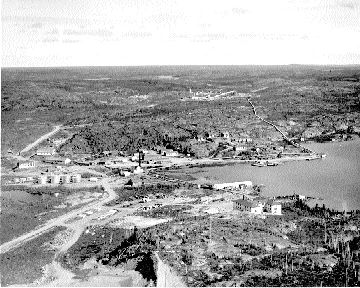After 10 years of engineering studies, the federal government has proposed freezing 237,000 tonnes of arsenic sitting in numerous underground chambers at the former Giant gold mine, near Yellowknife, N.W.T.
In effect, the mine would be frozen like a giant inverted popsicle, using “thermal siphons” and allowing the permafrost to hold everything in place.
Thermal siphons, which require no outside power to operate, are used to keep permafrost solid under the foundations of buildings (as at the Diavik diamond mine, also in the Northwest Territories).
At Giant, the freezing process would last 20 years and cost $90-120 million, not including the cost of the surface cleanup.
The gold at Giant is contained in arsenopyrite, about half of which is arsenic. Over the years, arsenic dust, a byproduct of the gold-refining process, was used to refill mined-out chambers up to 80 metres beneath the surface. When they became full, the entrances were sealed with concrete. There are now 15 such chambers.
Although water trickles through the Giant’s rocks and tunnels, the arsenic has been contained by a series of pumps 600 metres below the surface. As the contaminated water collects, it is pumped to the surface and treated. This process costs the federal government about $3.6 million each year.
Other proposals have been put forward, but all would require miners to enter the sealed chambers — a dangerous proposition given chamber’s unstable ground and toxic contents. And because of the irregular shape of the largest chambers, remotely operated equipment cannot be used to remove the arsenic.
From 1949 to 1997, the Giant mine produced 14.8 million oz. gold. It was last operated by Royal Oak Mines, which went bankrupt in the late 1990s, whereupon the federal government assumed control. The mine was later bought by Miramar Mining, which continues to haul 300 tonnes of ore per day. However, the environmental liability remains with the government.


Be the first to comment on "Gov’t proposes deep-freeze at Giant"